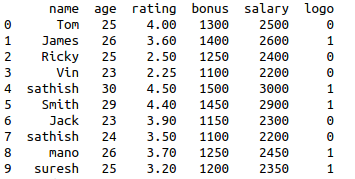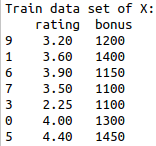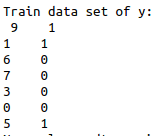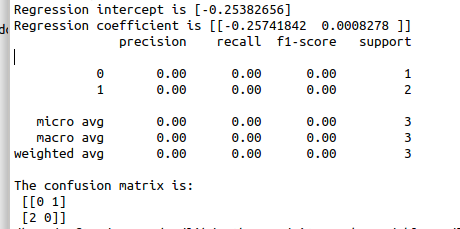To build a logistic regression model for given data set using python.
Import libraries.
Read the sample data.
Define X and y variables.
Build the logistic regression model using sklearn.
Split the sample data into training and test data.
Fit the training data into the regression model.
#import libraries
import pandas as pd
from sklearn.model_selection import train_test_split
from sklearn.linear_model import LogisticRegression
from sklearn import metrics
from sklearn.metrics import classification_report
#read the data set
data=pd.read_csv(‘/home/soft27/soft27/
Sathish/Pythonfiles/Employee.csv’)
#creating data frame
df=pd.DataFrame(data)
print(df)
#assigning the independent variable
X = df[[‘rating’,’bonus’]]
#assigning the dependent variable
y = df[‘logo’]
#split data in training and test data
X_train, X_test, y_train, y_test = train_test_split(X, y, test_size=0.3, random_state=0)
print(“Train data set of X:\n”,X_train)
print(“Train data set of y:\n”,y_train)
#build the model
logmodel = LogisticRegression()
logmodel.fit(X_train,y_train)
#predictions
predictions = logmodel.predict(X_test)
#regression co-efficients and intercept
print(“Regression intercept is”,logmodel.intercept_)
print(“Regression coefficient is”,logmodel.coef_)
#classification report
print(classification_report
(y_test,predictions))
cm = metrics.confusion_matrix(y_test, predictions)
print(“The confusion matrix is:\n”,cm)
#####Take more sample for more precision and recall values.



